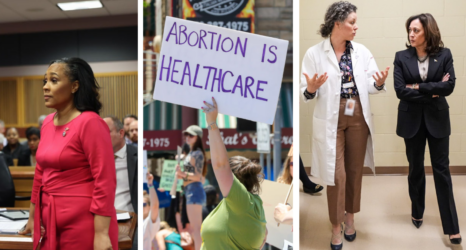Some use dash cams. Others use mace. But all women Uber drivers face safety concerns—and there’s little support from the company, according to some drivers.
“Uber sees the great dollar. They see more rides, more money. That’s what they want,” says Philadelphia-based driver Martha Voorhees. “There’s not the kind of support that we need. We don’t have enough support from Uber on any of this.”
Uber is no stranger to controversy, ranging from promoting free rides with “hot chick” drivers to operating without a CEO. Its 180 Days of Change initiative rolls out a series of reforms, including in-app tipping. But so far reforms haven’t addressed the concerns of women drivers, who account for about twenty-one percent of active UberX drivers in the U.S.
Driving strangers around is a dangerous job in itself. Taxi drivers face the highest murder rate of any profession. On top of that, ride-hailing apps such as Uber aren’t required to outfit their cars with partitions, security cameras and other safety features typically required of taxi cabs. Add being a woman driver to the mix, and you get the idea.
“I don’t drive the night shift anymore,” says Voorhees, who has driven for Uber since 2014. “A lot of the girls are having a tough time out there. They drive that night shift and people are drunk, whether it’s guys or girls that are drunk. They’re getting hit on a lot. That’s the part that’s really bad. You can’t control it. The guys will get touchy-feely with the female drivers. If you got them in the back seat, it’s riskier because they can grab you from behind.”
Seattle-based university student Sophie Donan drove Uber for just a few months last year before quitting. “I would get men in the car who would expect me to go into homes with them for a tip,” she says. “I’m sure you can kind of get my drift of what they were expecting. That sort of thing is very scary.”
Women driving for ride-hailing apps face risks such as sexual harassment and assault. A Buzzfeed report revealed the term “sexual assault” appeared in 6,160 support tickets submitted to Uber from 2013-2015 from drivers and riders. Uber claimed that only 170 of the allegations were valid and attributed the others to a glitch in the search tool, a position later recanted. More recently, a San Diego-based driver told The Guardian that Uber did nothing when she was attacked by her passengers in November 2015.
Uber takes pride in its fast, fairly straightforward on-boarding process. But this comes with a caveat: most drivers don’t get any training. There’s quality improvement classes—if drivers can shell out $35-$60—and a free 15-minute video on how to use the app, but these are voluntary. The video, which at times sounds more like a marketing plug than a training session, includes inexplicably vague tips like “know your city” and “keep your car clean.” There’s no mention of difficult scenarios that a driver could encounter with passengers, such as drunkenness or sexual harassment.
“[I received] absolutely no training,” says Donan. “I was really shocked with how little I was told on what to do. The only thing I got were these little Uber stickers that would go in the window.” Uber’s reluctance to expand its training comes in part from the concern that doing so would blur the lines between independent contractor and employee, a move that Uber has fought.
So when it comes to safety, women drivers have to take matters into their own hands. Sacramento-based driver Julianne James keeps a dash cam in her 2012 Honda accord. “I think it intimidates a lot of the passengers into behaving well,” says James, who drives late nights on the weekend. “There’s different gadgets you can use to protect yourself and riders.”
Skye Dalby, a Denver-based driver who has driven for Uber since 2013, takes another approach—she avoids late night driving altogether, trading higher pay for safety. “I’m more of an early morning and afternoon kind of girl,” she says. “I’ll take you to the party, but I’m not going to pick you up.”
Contacting Uber when something goes wrong is another issue in itself. “Support for us, especially as females, is not there. It is so difficult to get through with support,” says Voorhees. “You can’t email them anymore. You can’t call them. There’s no emergency numbers. All you have is your in-app support. This can take forever. You can go through thirty support messages and get no results. It’s all about robo answers. They’re canned answers.” Although a phone line services some cities, including Denver, live representatives are offshore.
Uber is trying to improve its track record. In February, it launched “Greenlight Hubs” in some cities, basically in-person support centers for drivers. Some of Uber’s corporate offices host meetings and social events for women drivers. Dalby attended a Mother’s Day event in Denver, complete with free massages and pedicures. But for the most part, women Uber drivers rely on each other, whether in person or online, for support. Voorhees is admin for one of these groups. James runs another.
Concerns about safety and pay have led some women drivers, such as Donan, to quit. But others, including Dalby, Voorhees and James, continue driving with the company. They say they like the flexible hours and how Uber has made life easier for many, including people with disabilities. But they want to see improvements for women drivers.
“I do believe Uber cares,” says Dalby. “I think we should just all work with each other and maybe have safe channels where we can check in with each other.”
“I love to drive. I get to go places I may never have been. I meet wonderful people,” says Voorhees. But, she added, “There’s not the kind of support that we need.”
Uber did not immediately respond to request for comment.




